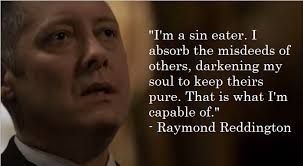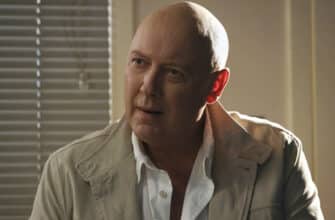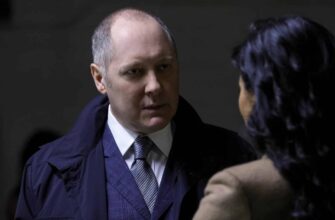WARNING SPOILER ALERT:
It was back in nineteen forty-two,
I was a member of a good platoon.
We were on maneuvers in-a Louisiana,
One night by the light of the moon.
The captain told us to ford a river,
That’s how it all begun.
We were — knee deep in the Big Muddy,
But the big fool said to push on.
Pete Seeger
With “MARCH MADNESS” in the air, it might be a good time to break out this analogy. I covered the NBA for nearly twenty-years, in a previous lifetime, and consider myself a basketball purist. Growing up in the sixties, I got to witness two of the greatest coaches of all time: John Wooden, the bench-boss for the UCLA Bruins, and Red Auerbach, head coach of the Boston Celtics. Both men stressed the fundamentals of the game, and chastised their teams for taking last-minute, desperation shots. A major part of the success of their teams, was the ability to get the ball close to the basket, before attempting to score.
A strategy employed by both coaches to get into position for high-percentage shots, was a crisp passing-game. It served three purposes, advancing the ball closer to the basket, keeping the defensive team off-balance, and eating valuable minutes off the clock, to keep their opponents possessions down. A great passing game’s a beautiful sight to behold, and as graceful as ballet. However there might not be a more deflating moment during a game, when the offense makes “one pass too many,” leading to a turnover.
The NBC series “The Blacklist,” decided to shake-up the snow-globe throughout the show’s fifth season. We rejoined Raymond Reddington, back in September, when the former “Concierge Of Crime,” found himself living in a cheap motor-lodge, and wearing hand-me-downs. Many viewers assumed that this campaign would be devoted to the restoration of Raymond Reddington, to his former status. However a fortunate encounter with a postman named Anthony, quickly restored his depleted coffers after he setup a network of high-end safe-houses, used by criminals on the lam.
The series went into its fall-hiatus after altering the show’s dynamic irrevocably, in a move that angered many of the show’s long-time fans, and cheered by others. Jon Bokenkamp and company, decided to put an end to the tempestuous relationship between Lizzie and Tom Keen, as Tom became a casualty of this season’s “BIG BAD” Ian Garvey, dying in November. The show also fast-forwarded rejoining Liz and Raymond after she awoke from a ten-month coma. When the series returned in January, viewers reentered their universe after another time leap.
Liz completed her physical-therapy, and living in Alaska under an alias, trying to deal with her grief. She pronounced herself healed and returned home, after she channeled her inner Charles Bronson, and executed four contract killers. She felt no remorse for her actions, considering it just a warm-up for the carnage she would wreak on those who took her husband from her.
Thus began a long and drawn out dance as Keen started embracing her demons, as she first explored and eventually started to inhabit her dark-side, while searching for those responsible for Tom’s death. She even took inspiration from Blacklist members, utilizing the Stewmaker’s skill set to dispose of Bobby Navarro’s corpse. She became so laser-focused on her mission, that she sent her daughter Agnes to live with Tom’s mother, and gave up her badge.
This new dynamic altered the series cadence, with episodes branching off into three different story-arcs, sometimes but not necessarily intersecting. While the Task-Force primarily deals with the Blacklist members after Samar meets with Raymond, we follow Reddington and Keen on their journeys. Red and Elizabeth share a common goal, making Garvey pay for killing Tom and Nik Korpal, however he’s intent on keeping the occupant of the duffel bag’s identity from Keen, while she’s determined to learn Reddington’s secret.
Here’s where we get back to the basketball analogy. While the game carried on in a slow-downed pace, the execution remained top-notch. Bringing in key players off the bench such as Dominic Wilkinson, Earl Fagen, Raleigh Sinclair, and Abraham Stern, kept the action entertaining. Until the squad made “one pass too many,” and threw the ball out-of-bounds.
One of the many reasons that the “Cabal,” story-line successfully played out over nearly three seasons, was the pacing. Bokenkamp and the rest of his team doled out information in small doses, keeping viewers intrigued. Fans watched as the mysterious relationship between Reddington, and Alan Fitch, got revealed leading to our discovery of the shadow organization as well as the “Fulcrum.” Eventually viewers realized that the organization played a large part of Keen’s life since childhood.
The story-arc finally culminated, when Laurel Hitchin asked Reddington to get rid of “The Director,” Peter Kotsiopoulos. That happened in dramatic fashion, getting thrown out of a private jet and crashing to his death in a European family’s living-room., in a move nobody could have predicted. That’s also been a critical factor in the appeal of the series, the writers ability to zig instead of zag. Leading viewers down a pathway that seems familiar, then suddenly veers off into an unexpected direction took this series to a rarefied level.
In this viewer’s eyes, the show-runners’ seemed to have lost some of that magic over the last few episodes. Part of that reason stems from telegraphing its short-term plots. Norman Singleton became “Dead Man Walking,” the moment Liz took him into her confidence, and brought him to the Post-Office. When he told her that after they captured the dirty cop, she needed to pickup Agnes, and he’d get a new lawyer, I suddenly recalled Keen asking Tom, why everybody they love dies?
Why would a police detective in his own station-house fear the threats of a dirty cop, and instead of arresting him, goes on a ride that he realizes will lead to his death? Especially when that detective has an established with a Bureau Task-Force, and Raymond Reddington? Just by picking up his phone, his daughters would either be in protective custody, or safely relocated before Garvey could make his one phone-call. We saw that demonstrated in the most recent episode, as Reddington safely relocated witness Tony Mejia and his grandmother, keeping them out of Garvey’s hands.
When we met Bureau psychiatrist Sharon Fulton, she reminded me of a combination of Laurel Hitchin and Julian Gale. While being unsure if Fulton would be a friend or foe, she made this viewer feel hinky, thinking that was far more to the character than she revealed. When Keen asks Fulton whether Anthony Hollis could be the man she’s searching for, she failed to realize that it would take someone with the doctor’s intelligence to discover the serial killers’ identities. Her obsession with darkness dulling her skills, she embraced Fulton as a mentor, not realizing the psychiatrist skillfully played her.
While enjoying Aram Mojtabai suddenly taking a more active role on the Task-Force, was there any doubt that Reddington engineered Tony Mejia’s extraction from FBI custody? (It’s just a matter of time until Aram encounters the man with David Bowie eyes again.) Or that Raymond would hand the young man over to Garvey? Tony and his grandmother have likely been relocated to a far more upscale existence, than either of them dreamed of experiencing.
Elizabeth Milhoan Keen/Masha Rostova, was by no means an innocent babe in the woods when the man we know as Raymond Reddington, entered back into her life. Her methods could be questioned, but not her morals. The woman we’ve come to know over the past five years, could be mercurial and impulsive. However unlike Reddington, we’ve never questioned that she had a true moral compass that always pointed north. That’s why Raymond told Lizzie, that when he looks at her he sees his way home. That’s why he described her to Fulton, as everything that he’s not.
When she brutally executed the four men in Alaska, and in Bobby Navarro’s accidental death, we could justify them all as self-defense. However in “The Capricorn Killer,” Keen crossed a huge moral line, she allowed Sharon Fulton to escape, and to continue tracking down and executing serial killers. We’ll never know if Keen would have smothered the “Sandman,” to death, something that seemed impossible to contemplate at the onset of this season.
While the acting’s been incredible throughout this campaign, the story seems stuck “In The Big Muddy,” over the last few episodes. The much-anticipated first encounter between Raymond Reddington and Ian Garvey, proved to be anti-climactic to say the least. There are now six episodes remaining in the show’s fifth campaign, seemingly heading into a sixth season. I made my predictions on this season back in December, if you desire you can read my theories and feel free to leave your commentary. My concerns aren’t with next season at this point, it’s more a matter of getting season five back on course. Hopefully the man we know as Raymond Reddington, will sail this season safely into port.






